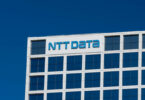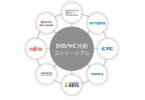Last week Tokio marine and & Nichido Fire Insurance announced it completed a Proof of Concept (PoC) for marine insurance cargo claims. The Japanese insurance company has been working on the project with NTT Data since November last year.
The blockchain initiative involves sharing the claims data. So this includes the damage report, photographs of the damage, invoices, the insurance policy, bill of lading, statement of repair, etc. During the trial, the information was shared with eight overseas claims settling agents and surveyors on three continents. The other vital participants are the importer and their transportation company.
As with most insurance procedures, the standard methodology involves a lot of emailing back and forth. For example, the claims settlement agent has to action an email to provide data to the surveyor. Until that’s done, the surveyor can’t start work. Whereas by sharing documents via a blockchain the data is available to the parties immediately.
The ultimate benefit is the claim processing period is reduced from more than a month to less than a week.
The company stated that “we also conducted the verification
from different points of view including proper access performance and operational efficiency.”
As a result, Tokio marine plans to continue developing the project with the aim of going live in the 2019 financial year.
Other blockchain projects
Another significant marine insurance project is the Insurwave platform developed by EY and Guardtime where Maersk is the first major client. However, the focus of that project is the insurance of the vessels, or rather the hull and machinery. Although EY and Guardtime are planning cargo insurance that was not in the first phase.
There are numerous blockchain projects focused on tracking containers in supply chains. Maersk’s TradeLens is one, but others include CargoSmart’s substantial new project and an Accenture venture. And most of those will want to integrate with insurance platforms sooner rather than later.







